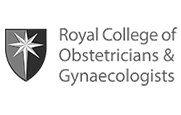Insertion of Mirena
What is a Mirena?
A Mirena is a hormone releasing intrauterine system (IUS) that is over 99% effective at preventing pregnancy for up to 5 years. It is a small, plastic, T-shaped device that releases a very small amount of progestin hormone called Levonorgestrel. It doesn’t contain oestrogen, which is one of the two hormones contained in the combined oral contraceptive pill. Levonorgestrel reduces the monthly growth of the uterine lining that is shed as a “period”, therefore causing lighter periods. Over 20% of women using a Mirena will be period free after 1 year, and with longer term use this number increases to 30-40%. There is no latex contained in a Mirena.
What is a Mirena used for?
Mirena has now largely replaced the previous non-hormonal IUCD as the main form of intrauterine contraceptive device. However, Mirena is also widely used for other indications including:
- Heavy menstrual loss
- Painful menstruation
- Prevention of endometriosis recurrence
- Provision of the progestin component of a combined hormonal replacement therapy (HRT) regime in combination with a form of oestrogen
- As a treatment for endometrial hyperplasia
What are the potential side effects of a Mirena?
The most common side effect following the placement of a Mirena is bleeding or spotting between periods that may last from 3 to 6 months. Over time, this bleeding or spotting between periods will reduced together with the reduction of menstrual loss.
Despite the Mirena releasing only a very small amount of progestin, some women may still be sensitive enough to experience hormonal side effects including headaches, nausea, breast tenderness, weight gain and mood changes.
How is a Mirena placed?
Mirena is typically placed in the office and takes approximately 5 to 10 minutes including preparation time. The actual fitting of the Mirena usually only takes a few minutes. Sometime the Mirena insertion in the office may not be possible for some women and it may have to be performed in hospital under a general anaesthesia. The best time for insertion of a Mirena is shortly after a period. Prior to insertion, one should ensure there is no pregnancy and no pelvic infection. Placement of the Mirena is easier for women who have had vaginal birth, but it is still possible for those who haven’t. It is advisable to take pain killers such as Nurofen or Ponstan an hour before the Mirena insertion to minimise potential discomfort. The Mirena is placed inside the uterus (womb) and the two fine nylon strings that are attached to the Mirena are cut 2cm outside the cervix. These strings serve 2 functions; it can be felt with a finger inserted into the vagina to check that the Mirena is still in place and secondly it provides a convenient way to remove the Mirena when it is no longer required by gently pulling on these strings. You may have period-like cramps, bleeding or spotting in the first few days after the insertion. Nurofen and Ponstan should help with the cramps and sexual intercourse should be avoided for a few days.
What needs to be done after having a Mirena?
After placement of a Mirena, the strings should be checked on monthly basis to ensure that the Mirena is still in place. Rarely the Mirena may get expelled from the uterus. Mirena may take some time to settle in the uterus and one can have bleeding or spotting between periods for up to 3-6 months, as previously mentioned. When one is ready for pregnancy, the Mirena can be easily removed in the office and fertility will rapidly return.















